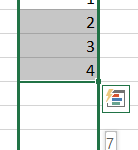What to Do When Excel Has Stopped Working
The sudden and unexpected closure of Excel, often accompanied by the dreaded “Excel has stopped working” message, can be a frustrating experience, potentially leading to lost work and disrupted productivity. Understanding the common causes behind these crashes and knowing the steps you can take to resolve them is crucial for maintaining a smooth workflow.
One of the initial actions you should take when Excel unexpectedly stops working is to attempt to restart the application. Sometimes, a temporary glitch or a minor software conflict can cause a crash, and simply closing and reopening Excel might be enough to resolve the issue. Ensure that you save any other open work in other applications before attempting to restart Excel, as a system-level problem might be at play.
If a simple restart doesn’t solve the problem and Excel continues to crash, the next step is to consider whether the issue is related to a specific workbook you were working on. Try opening Excel without opening any specific files. If Excel opens successfully, the problem likely lies within the problematic workbook. In this case, try opening the workbook in safe mode. You can do this by holding down the Ctrl key while you open the Excel application or when you select the specific workbook to open. Safe mode starts Excel with minimal functionalities and without loading any add-ins. If the workbook opens without crashing in safe mode, it suggests that an add-in might be the root cause of the problem.
To investigate problematic add-ins, you need to manage them. Go to the “File” menu in Excel, then click on “Options”, and in the Excel Options dialog box, select “Add-ins”. At the bottom of the window, you’ll see a dropdown menu labeled “Manage”. Ensure that “Excel Add-ins” is selected and then click the “Go” button. This will open a list of your currently installed add-ins. You can try deselecting all the add-ins and then restarting Excel normally. If Excel now works without crashing, you can then re-enable the add-ins one by one, restarting Excel after each one, to identify which specific add-in is causing the instability. Once you identify the culprit, you can either disable it permanently, look for an updated version, or consider alternatives.
Another common reason for Excel to stop working is outdated software. Ensure that you have the latest updates installed for both Microsoft Office and your Windows operating system. To check for Office updates, open any Office application like Excel, go to “File” > “Account”, and under “Product Information”, you should see an “Update Options” button. Click on this and select “Update Now” to check for and install any available updates. Similarly, for Windows updates, you can search for “Windows Update” in the Start Menu and follow the prompts to check for and install any pending updates. Keeping your software up to date often includes bug fixes and stability improvements that can resolve crashing issues.
Sometimes, the problem might be related to your Excel user profile. You can try running Excel as an administrator or creating a new Windows user profile to see if the issue persists. To run Excel as an administrator, right-click on the Excel shortcut and select “Run as administrator”. If this resolves the problem, it might indicate an issue with permissions related to your user profile. Creating a new Windows user profile can help determine if the problem is specific to your current user profile’s settings or configuration.
In more technical scenarios, the issue could be related to corrupted Excel installation files or conflicts with other software on your computer. You can try repairing your Microsoft Office installation through the Control Panel. Go to “Programs” > “Programs and Features”, find your Microsoft Office installation in the list, right-click on it, and select “Change”. In the setup dialog, choose the “Repair” option and follow the on-screen instructions. This process can often fix corrupted files that might be causing Excel to crash.
Finally, while less common, system issues like corrupted system files or outdated drivers can also lead to application crashes. Running the System File Checker tool in Windows can help identify and repair corrupted system files. You can do this by opening Command Prompt as an administrator and typing the command sfc /scannow and pressing Enter. Follow the on-screen instructions to allow the tool to scan and repair any issues it finds. Additionally, ensure that your device drivers, especially for your graphics card, are up to date, as outdated or incompatible drivers can sometimes cause application instability. You can usually find the latest drivers on the website of your computer or hardware manufacturer.



